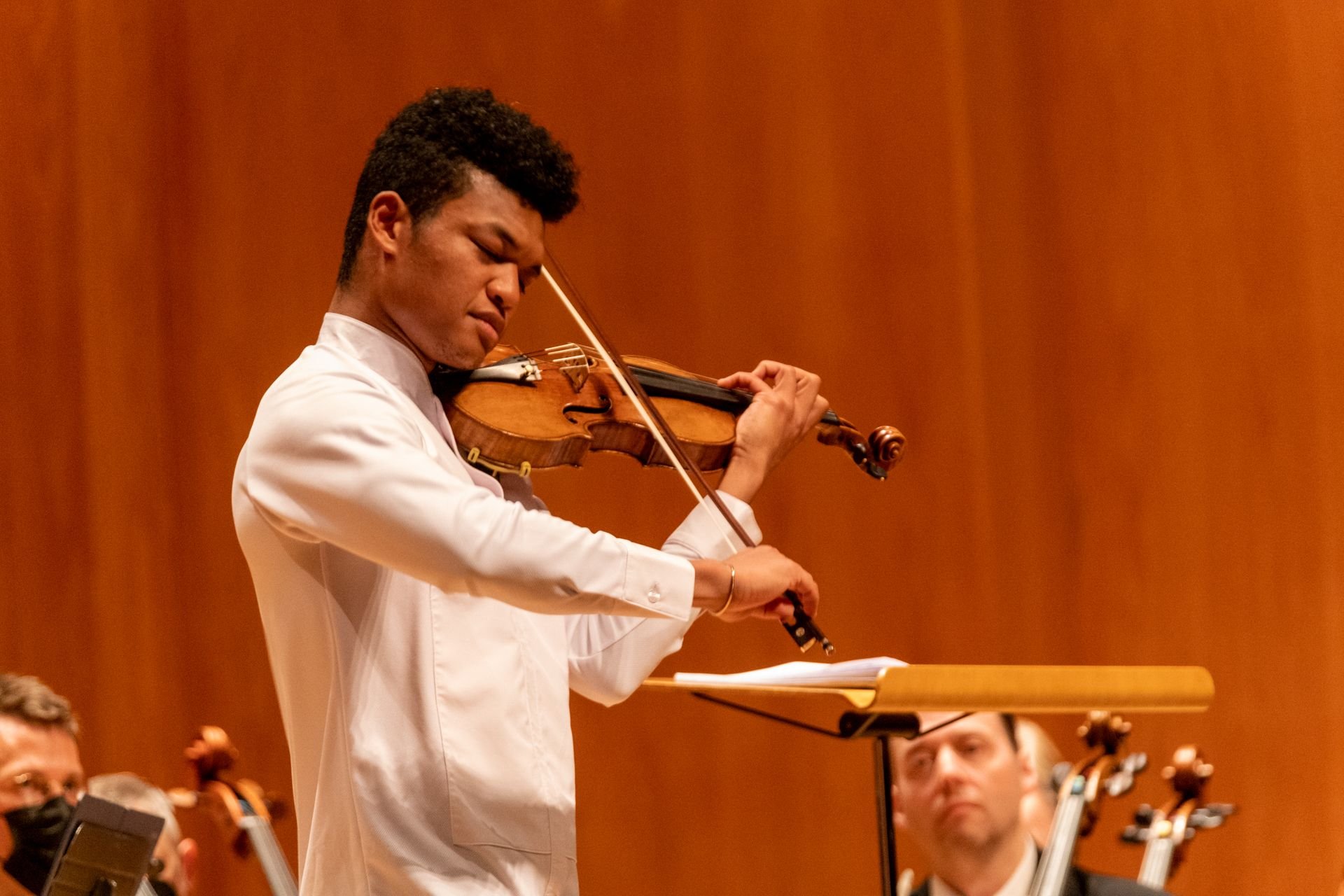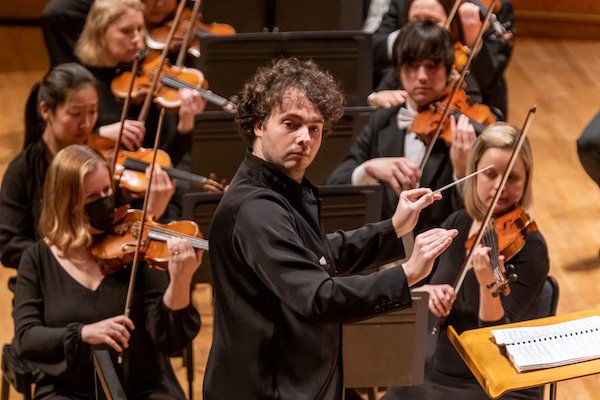Rave review for Randall Goosby with the Utah Symphony
Randall Goosby performed Bruch’s Violin Concerto No. 1 with Jiří Rožeň conducting the Utah Symphony Friday night at Abravanel Hall (Photo credit: Ian Mower)
Youth on display in a dazzling Utah Symphony program
By Catherine Reese Newton
Utah Arts Review
March 4, 2023
Two young guests joined the Utah Symphony to bring vigor and pizzazz to a chilly Friday evening.
Violinist Randall Goosby, 26, dazzled with seemingly effortless excellence, while conductor Jiří Rožeň, 31, led the orchestra with seemingly endless enthusiasm.
The chic simplicity of Goosby’s crisp white shirt and black trousers matched the matter-of-fact elegance of his playing in Bruch’s Violin Concerto No. 1. The soloist’s 1735 Guarneri del Gesù filled Abravanel Hall with golden but immaculately focused tone.
Goosby eschewed showmanship as he settled comfortably into his sonic surroundings, often turning to face the orchestra during longer tutti passages. But there was never any question he was the star. He tossed off the virtuosic cadenzas of the first movement with precision and panache, repeating the feat in the brilliant double-stopped passages of the jaunty finale. In between came the soulful, beautifully phrased melodies of the slow movement.
Throughout, Rožeň—a rare left-handed conductor—led the orchestra in warm, thoughtfully shaped support. While he generally favored a big and bold sound, he also brought out the work’s lyricism, especially in the slow movement. His transition from the first to the second movement was particularly magical.
The cheering crowd summoned Goosby back for a spectacular encore, Coleridge-Taylor Perkinson’s “Louisiana Blues Strut”. True to the piece’s subtitle (“A Cakewalk”), the violinist handled its technical demands with easy aplomb and his breackneck tempo never came at the cost of clarity.
Jiří Rožeň conducted the Utah Symphony in music by Dvořák, Bruch and Ana Sokolović Friday night.
The orchestra’s rendition of Dvořák’s Symphony No. 5 under Rožeň’s baton was the kind of performance that makes you think, “Why isn’t this piece programmed more often?” (The Utah Symphony hadn’t played it since 2005.)
Rožeň was a highly persuasive advocate for his fellow Czech. The first movement was an unabashed celebration, with the strings summoning boldness and lift. The woodwinds shone in the earthy pastoralism of the second movement—vintage Dvořak. The party resumed in the buoyant scherzo, reminiscent of the livelier of Dvořák’s Symphonic Dances. Percussion and brass were the heroes in the finale, with some zesty trumpet flourishes to top the evening off.
The concert opened with Serbian-Canadian composer Ana Sokolović’s Ringelspiel. The title of this 15-minute work, which premiered in 2013, translates as “Merry-Go-Round,” but this is a carousel ride of the Willy Wonka variety. Sokolović makes generous use of extended technique, such as toneless blowing through wind instruments and slapping of strings, to suggest a helter-skelter ride on a steam-powered machine. Rožeň and the orchestra had fun with the novel sound effects, sounding by turns like a broken music box, a record playing backward, and turntables spinning in different directions. Ringelspiel was so radically different from the ensuing nineteenth-century works that the transition was a little jarring. But it was an undeniably enjoyable ride.
Read the full article here.


